Peer Landscaping Plant Catalog
Trees

Black Olive-Shady Lady
A larger leaf variety is available but this one is the most popular for its' compact growth. Has a unique layered growth pattern. Has small thorns and does not bear fruit. Freezes at about 30°F.
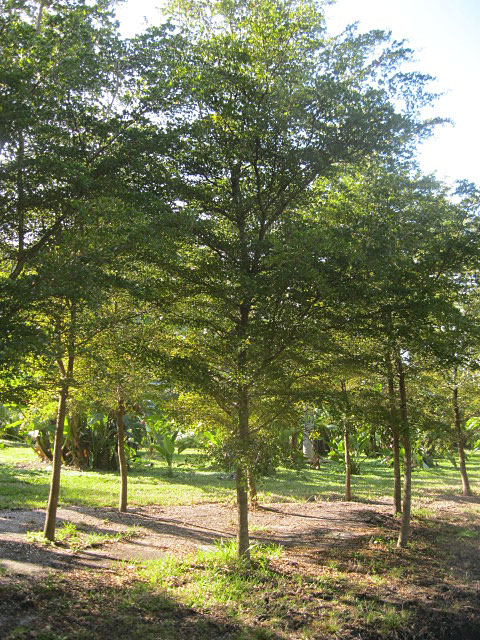
Black Olive-Shady Lady
A larger leaf variety is available but this one is the most popular for its' compact growth. Has a unique layered growth pattern. Has small thorns and does not bear fruit. Freezes at about 30°F.
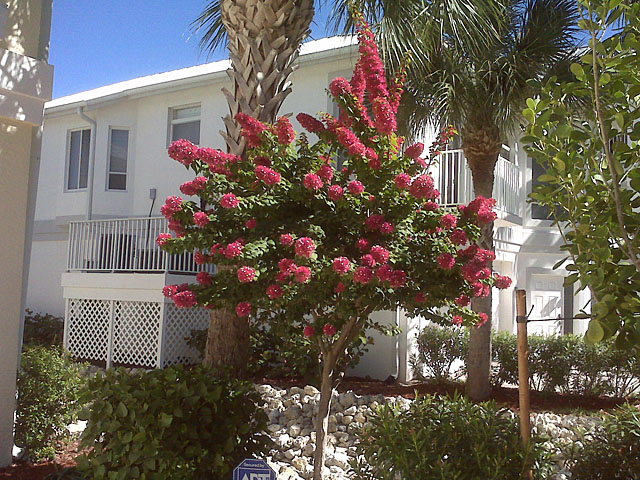
Bougainvillea-Pixie Pink
Are thorny, woody vines growing anywhere from 1-12 meters tall, scrambling over other plants with their spiky thorns. The thorns are tipped with a black, waxy substance. They are evergreen where rainfall occurs all year, or deciduous if there is a dry season. The leaves are alternate, simple ovate-acuminate, 4-13 cm long and 2-6 cm broad. The actual flower of the plant is small and generally white, but each cluster of three flowers is surrounded by three or six bracts with the bright colors associated with the plant, including pink, magenta, purple, red, orange, white, or yellow. Bougainvillea glabra is sometimes referred to as paper flower because the bracts are thin and papery. The fruit is a narrow five-lobed achene.
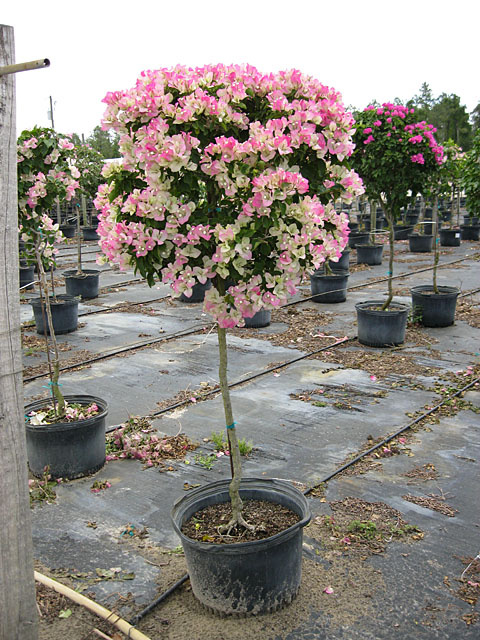
Bougainvillea-Tai Delight
Are thorny, woody vines growing anywhere from 1-12 meters tall, scrambling over other plants with their spiky thorns. The thorns are tipped with a black, waxy substance. They are evergreen where rainfall occurs all year, or deciduous if there is a dry season. The leaves are alternate, simple ovate-acuminate, 4-13 cm long and 2-6 cm broad. The actual flower of the plant is small and generally white, but each cluster of three flowers is surrounded by three or six bracts with the bright colors associated with the plant, including pink, magenta, purple, red, orange, white, or yellow. Bougainvillea glabra is sometimes referred to as paper flower because the bracts are thin and papery. The fruit is a narrow five-lobed achene.
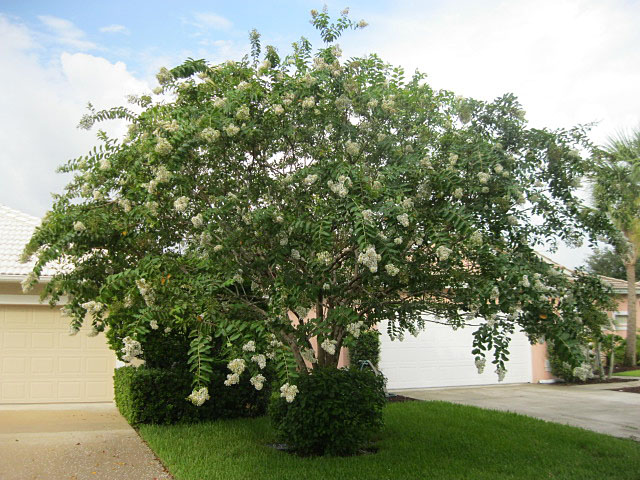
Crepe Myrtle-White
A Spectacular bloom clusters in a large variety of colors. Grown in multi stem or single trunk. Goes dormant in the winter. Cold hardy, used all the way up to North Florida.
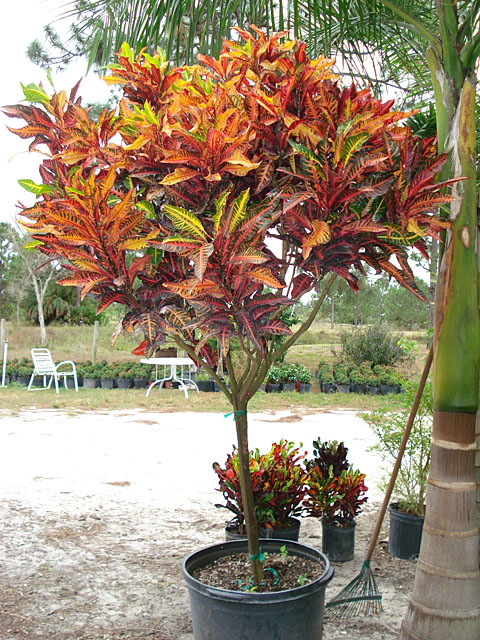
Croton-Fantasy
The Fantasy Croton adds a splash of color to any landscape. It stays colorful all year and is a hardy plant.
Palms
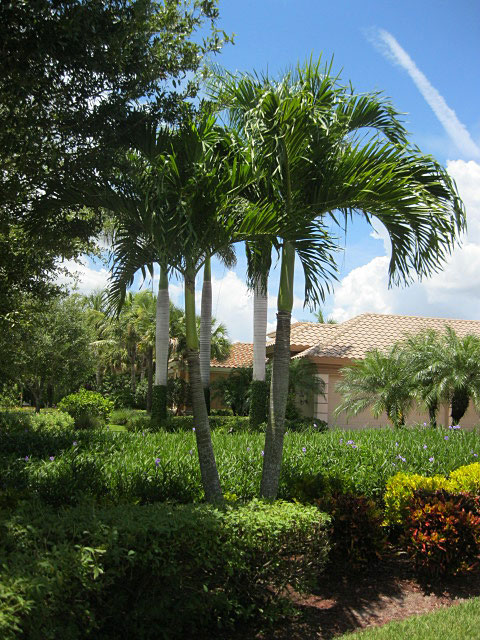
Adonidia Palm
Often referred to as Christmas Palm or Dwarf Royal. Large bunches of bright red fruit (seeds) are produced around Christmas time. This attractive and slower growing palm can reach between 15-20 feet in height. In landscaping, professionals recommend spacing of 15-20 feet between palms. They are available in multi stem or single trunk. Sensitive to temperatures below 40˚F. Damage will occur with frost and freezing temperatures.
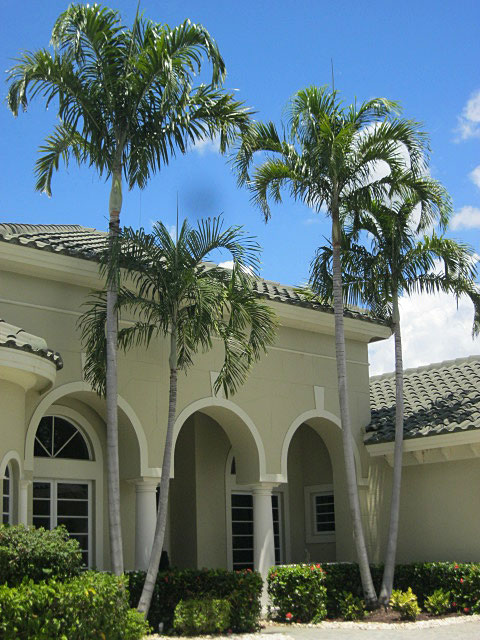
Alexander Palm
Faster growing palm which is very desirable for tropical domestic gardens with a head that looks like a feather duster. Available in single and multi-trunks. Flowering is in the late spring when it develops numerous small white flowers which turn to seed. Great for forming a foliage canopy. This palm is more cold hardy than the King Alexander Palm and can withstand temperatures as low as 35˚F.
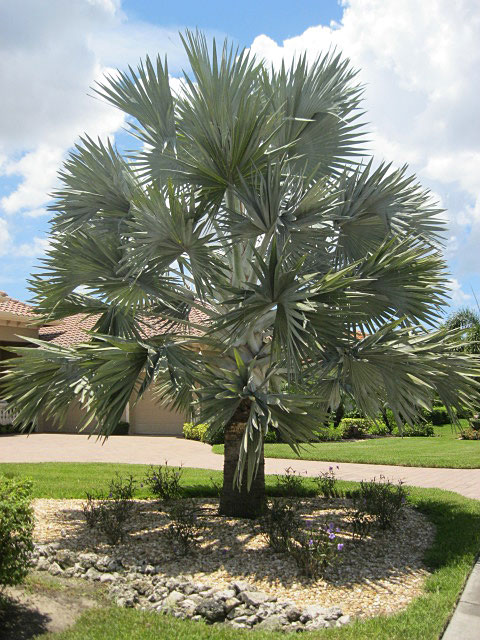
Bismarckia Palm
The “Bismarck Palm” has a bold and formal appearance with its silvery blue leaves. This palm is massive and can develop a spread of 20 ft. or more. Adapts well to Florida’s climate and conditions. Spectacular species that is drought tolerant once established. Have fewer problems with disease and nutritional deficiencies as other landscape palm trees. Cold hardy to about 30˚F.
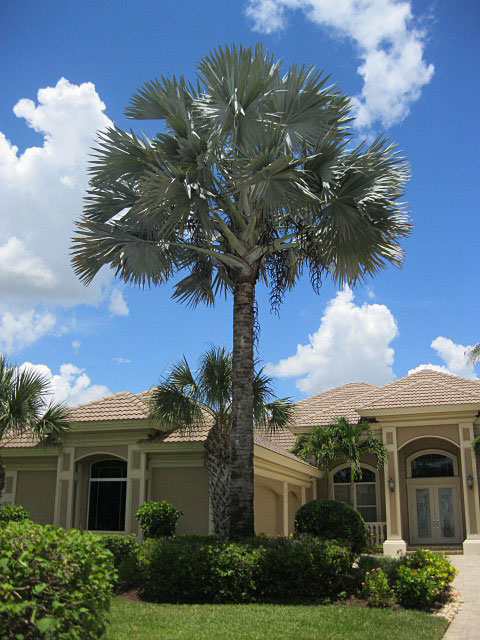
Bismarckia Palm London's
The “Bismarck Palm” has a bold and formal appearance with its silvery blue leaves. This palm is massive and can develop a spread of 20 ft. or more. Adapts well to Florida’s climate and conditions. Spectacular species that is drought tolerant once established. Have fewer problems with disease and nutritional deficiencies as other landscape palm trees. Cold hardy to about 30˚F.
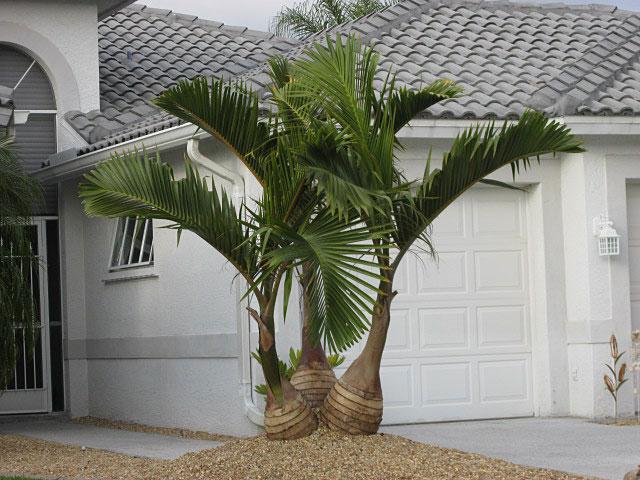
Bottle Palm
Unique looking palm with a trunk that develops at maturity to the shape of a “bottle”. Have upward arching leaves that can reach 10 to 12 ft. in height. Produces a flower stalk coming from below the crown shaft with cream colored flowers. Have oval shaped black fruit that is about an inch and a half long. Tolerates temperatures to 28˚F.

Carpentaria Palm
Very similar to the Adonida palm in appearance but has a taller more slender look and can reach an overall height of 40 feet. It is also a faster grower than the Adonida. The seeds are red in color and can irritate tender areas of the body if contacted. Very sensitive to the cold and can be killed by heavy frost.
Bromeliads & Orchids
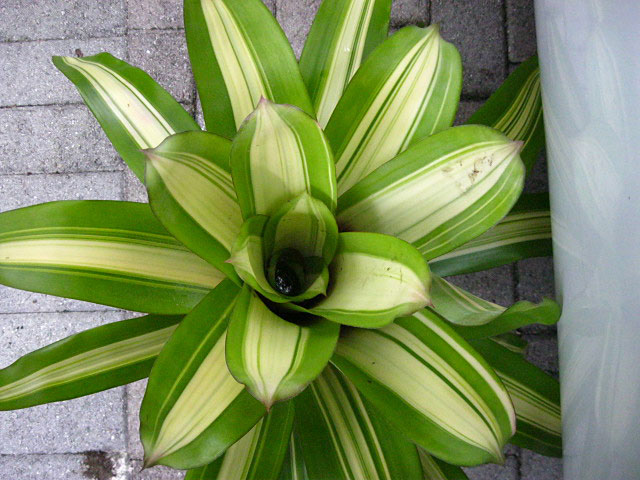
Aechmea-Frederike
Great plant as a lower level hearty textured plant. Grows 1-2 ft. Prefers shade to partial sun.
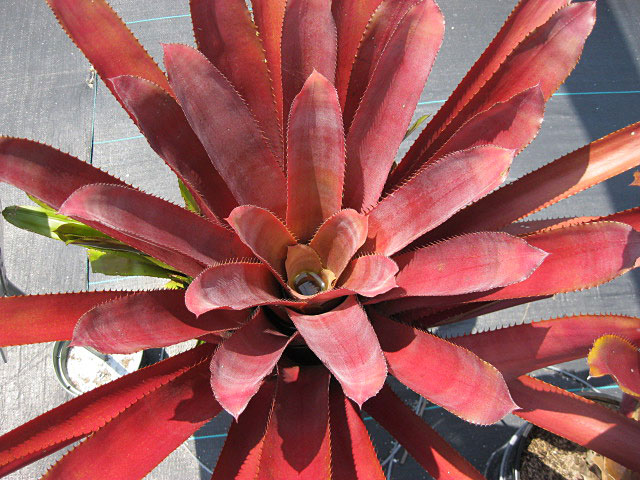
Aechmea-Hacienda
Great plant as a lower level hearty textured plant. Grows 1-2 ft. Prefers shade to partial sun.
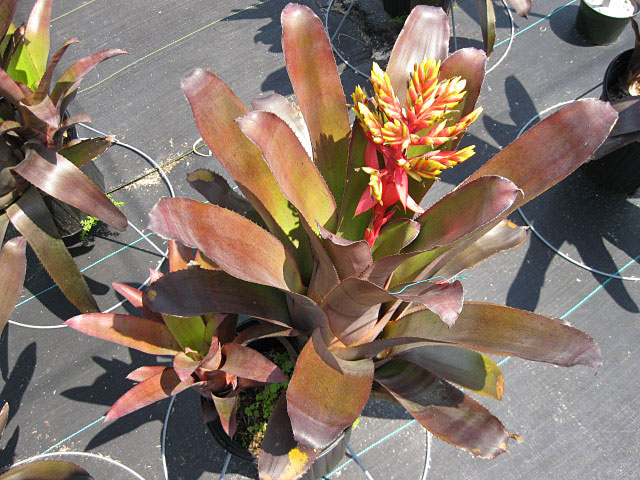
Aechmea-Chocolate
Great plant as a lower level hearty textured plant. Grows 1-2 ft. Prefers shade to partial sun.
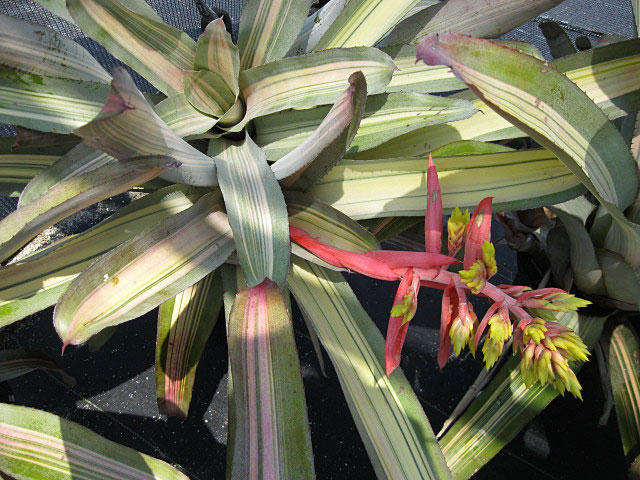
Aechmea-Chocolate
Great plant as a lower level hearty textured plant. Grows 1-2 ft. Prefers shade to partial sun.
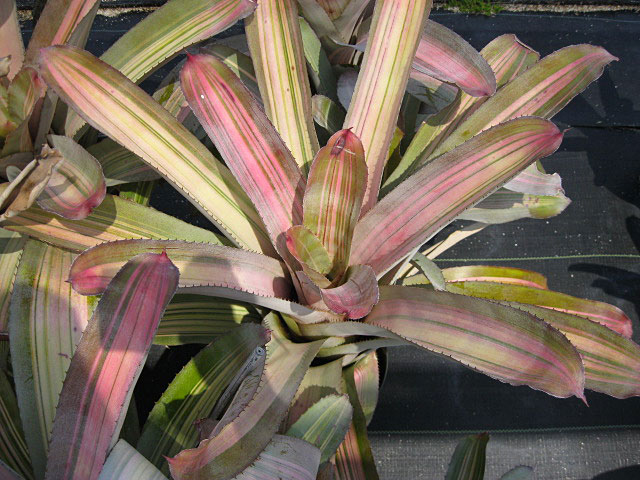
Aechmea-Loies Pride
Great plant as a lower level hearty textured plant. Grows 1-2 ft. Prefers shade to partial sun.
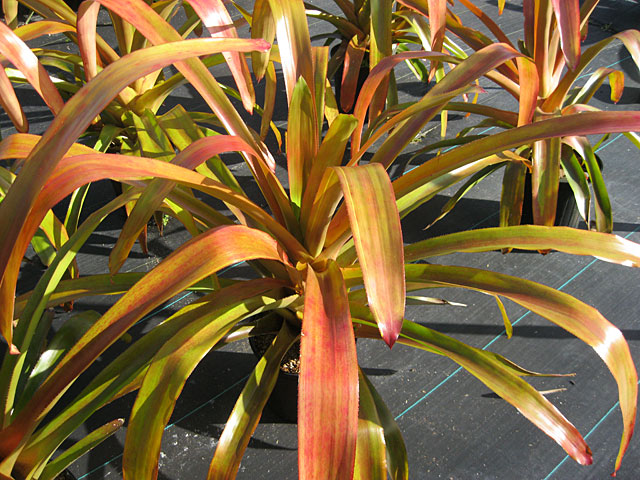
Aechmea-Pendulaflora
Great plant as a lower level hearty textured plant. Grows 1-2 ft. Prefers shade to full sun.
Accents, Groundcovers, Flowers, & Shrubs

Agapanthus
Also called African Lily or Lily of the Nile, this true lily is native to Africa. Produces clumps of long, shiny, strap-like leaves with spectacular flower clusters (6 to 12 in. across) which are white to dark blue in color. Blooms in late spring into the early fall and prefers full sun but can handle some afternoon shading. Flowers are fragrant which attract pollinating insects. Suitable for growing in the garden or as a potted house plant. Be careful handling this plant since it can cause irritation to the skin. Is moderately tolerant to frost.
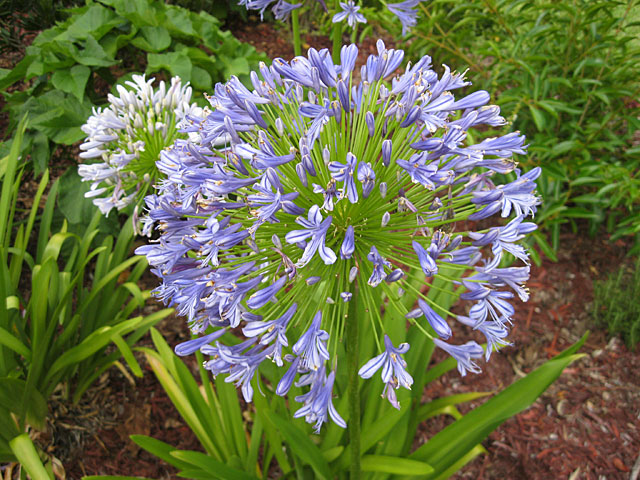
Agapanthus
Also called African Lily or Lily of the Nile, this true lily is native to Africa. Produces clumps of long, shiny, strap-like leaves with spectacular flower clusters (6 to 12 in. across) which are white to dark blue in color. Blooms in late spring into the early fall and prefers full sun but can handle some afternoon shading. Flowers are fragrant which attract pollinating insects. Suitable for growing in the garden or as a potted house plant. Be careful handling this plant since it can cause irritation to the skin. Is moderately tolerant to frost.
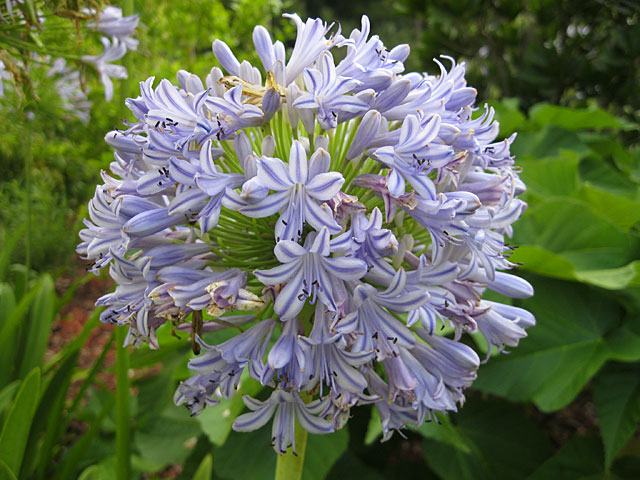
Agapanthus
Also called African Lily or Lily of the Nile, this true lily is native to Africa. Produces clumps of long, shiny, strap-like leaves with spectacular flower clusters (6 to 12 in. across) which are white to dark blue in color. Blooms in late spring into the early fall and prefers full sun but can handle some afternoon shading. Flowers are fragrant which attract pollinating insects. Suitable for growing in the garden or as a potted house plant. Be careful handling this plant since it can cause irritation to the skin. Is moderately tolerant to frost.
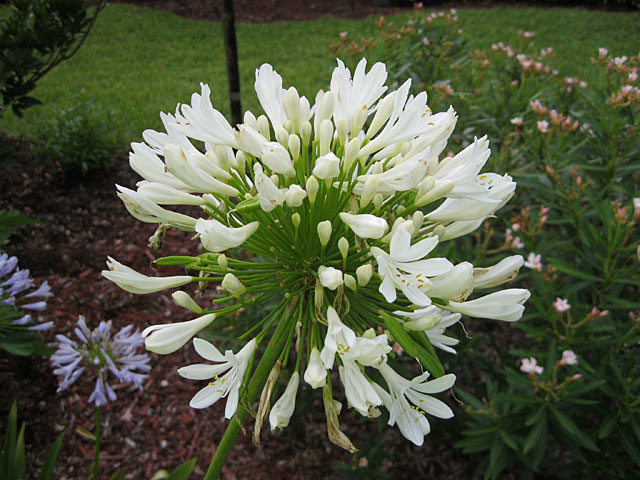
Agapanthus
Also called African Lily or Lily of the Nile, this true lily is native to Africa. Produces clumps of long, shiny, strap-like leaves with spectacular flower clusters (6 to 12 in. across) which are white to dark blue in color. Blooms in late spring into the early fall and prefers full sun but can handle some afternoon shading. Flowers are fragrant which attract pollinating insects. Suitable for growing in the garden or as a potted house plant. Be careful handling this plant since it can cause irritation to the skin. Is moderately tolerant to frost.
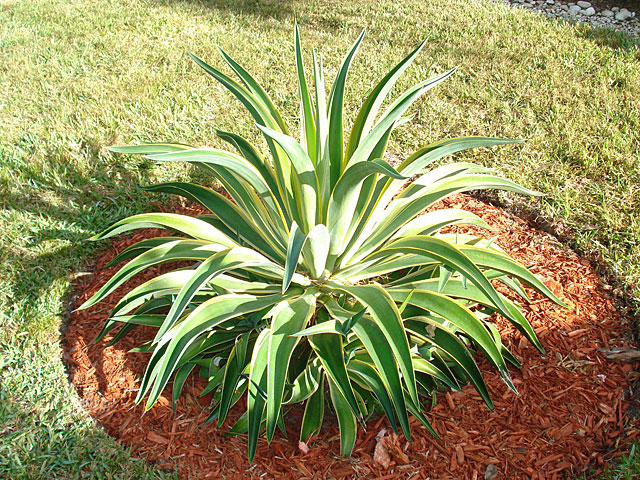
Agave-Caribbean Agave
Sometimes called the Century plant because of the length of time it requires to bloom (10 years plus). There are numerous varieties in the Agave family, some with very unusual leaf shapes, color variations and a wide array of growth habits from smaller stature to gigantic sizes. Flowering depends on the vigor of the individual plant, the richness of the soil and climate. Individual plants die after blooming but new plants (pups) which formed earlier will carry on the plant’s legacy. There are many species, some with vibrant colors, that will grab your eye in front yards and lawns. They like full sun but can tolerate some shade. Most varieties have thorns and some can have a bad bite with sharp barbs on the sides of the leaf and a wicked needle point an inch or more long at the tips. Certain varieties can be invasive, grow very large and live for many years. Many medicinal remedies are made from the juices of plants in this family as well as rope and Tequila from certain varieties. All varieties are highly drought tolerant and very cold hardy to South Florida.

Alternanthera
Native from Mexico to Argentina, A. ficoidea is a low-growing plant that typically grows on erect to procumbent stems to 6-12” tall. Species plants have elliptic to broad ovate green leaves (to 1” long). However it is the brightly colored cultivars that have become the popular garden plants, featuring green leaves blotched with yellow, orange, red, brown, copper or purple, sometimes with red veining. Foliage of the brighter colored cultivars is suggestive of coleus. White apetulous flowers appear stalkless or on short stalks in small axillary clusters in late fall to winter, but are insignificant. Flowers are usually observed in St. Louis only on houseplants or on container plants brought inside for overwintering. Plants in the genus Alternanthera have a rather large number of descriptive common names, including but not limited to Joseph’s coat, copperleaf, calico plant, bloodleaf, joyweed and parrot leaf, all in reference to the brilliantly colored leaves which provide foliage contrast to gardens and container plantings.
SCHEDULE ONLINE NOW WITH OUR LANDSCAPING SERVICES IN FORT MYERS!
